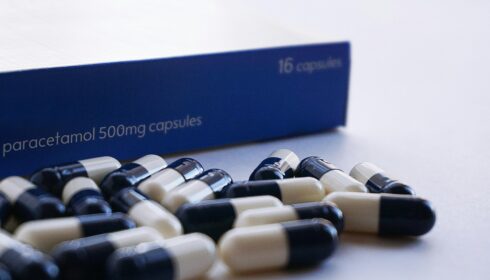Rivers
Early goal-directed therapy in the treatment of severe sepsis and septic shock
Rivers. NEJM 2001; 345:1368-1377. doi:10.1056/NEJMoa010307
Clinical Question
- In adults with severe sepsis or septic shock, does the use of early goal-directed therapy (EGDT) reduce the mortality?
Design
- Randomised controlled trial
- Computer-generated blocks of 2 to 8
- Concealed allocation
- No blinding of clinicians, study personnel or patients
- Power calculation: sample size of 260 required with 80% power and 0.05 alpha error rate to detect absolute reduction in mortality of 15% (expected baseline not specified)
- Intention-to-treat analysis
Setting
- Single academic tertiary hospital in Detroit, USA
- March 1997 to March 2000
Population
- Inclusion: Severe sepsis or septic shock
- ≥ 2 SIRS features, and either
- systolic BP ≤ 90 mmHg after crystalloid fluid of 20 to 30 ml/kg over 30 minutes, or
- blood lactate ≥ 4 mmol/l
- Exclusion: age under 18 years; pregnancy; other acute neurological, cardiac, gastrointestinal or respiratory pathology; contraindications to central catheterisation; uncured cancer; immunosupression; limitations defined for active care
- 268 randomised with 236 completing study
Intervention
- Early goal-directed therapy for 6 hours
- Remained in ED for 6 hours and protocolised therapy managed by an emergency physician, two residents and three nurses
- Oxygen ± intubation and mechanical ventilation
- Central venous and arterial catheterisation
- Central venous catheter (Edwards Lifesciences) capable of measuring continuous ScvO2
- 500 ml fluid boluses until CVP 8–12 mmHg
- Vasopressors or vasodilators until MAP 65–90 mmHg
- If ScvO2 < 70%
- Transfused red cells until haematocrit ≥ 30%
- If still ScvO2 < 70%
- Dobutamine 2.5–20 µg/kg/min until ScvO2 > 70%
- Dobutamine limited or reduced if MAP < 65 mmHg or pulse > 120 /min
Control
- Usual care for 6 hours without protocol
- Treatment at the discretion of the clinician and patient admitted to ICU as soon as possible after consult and lines inserted
- Oxygen ± intubation and mechanical ventilation
- Central venous and arterial catheterisation
- Targets defined but without treatment algorithm:
- CVP ≥ 8–12 mmHg
- MAP ≥ 65 mmHg
- Urine output ≥ 0.5 ml/kg/hr
Outcome
- Primary outcome: in-hospital mortality was statistically and clinically significantly better in the EGDT intervention group compared to the usual care control group.
- 30.5% vs 46.5% p = 0.009
- Secondary outcome: subgroup analyses all favoured EDGT
- severity of sepsis
- 28-day and 60-day mortality
- cause of in-hospital death (sudden cardiovascular collapse and multi-organ failure)
- Tertiary data collection:
- The EGDT group received more fluid over the early 6-hour period but there was no difference in total fluid over 72 hours
- More red-cell transfusions were given to the EGDT group
- Early inotropic use was more prevalent in the EGDT group (not statistically different over complete 72-hour period)
- Vasopressor use was more prevalent in the usual care group
- Intubation and ventilation was more prevalent in the usual care group
| Measure | EGDT | Usual Care | ARR | 95% CI | p | NNT |
|---|---|---|---|---|---|---|
| In-hospital mortality | 29.2% | 44.4% | 15.13% | 3.62 to 26.64% | 0.0150 | 7 |
| ARR = absolute risk reduction; CI = confidence interval; p = p value; NNT = number needed-to-treat Fishers’ exact test performed on reported in-hopsital mortality. This is different to Kaplan-Meier survival estimates reported in the orginal paper. |
||||||
Authors’ Conclusions
- “goal-directed therapy provided at the earliest stages of severe sepsis and septic shock… has significant short-term and long-term benefits.”
Strengths
- Adequate trial design for the clinical question
- 90% completed the study – a drop-out / lost-follow-up rate that is well below the primary outcome rate
Weaknesses
- Single centre study
- Intervention was a bundle of care, and individual components cannot be investigated separately
- Usual care control group had a higher than average mortality rate
- In-hospital mortality as an outcome measure has its limitations, as some patients will go to institutions or home to die soon after
- Lead author is a paid consultant for manufacturer of ScvO2-measuring central catheter, and has registered “early goal-directed therapy” and “EGDT” as his trademarks!
The Bottom Line
- Until ProCESS, ARISE and ProMISe, Rivers’ trial represented the best evidence for EGDT and demonstrated a strong benefit.
- Concerns and criticism by clinicians has led to modified but widespread adoption of the ‘bundle’ of care in severe sepsis and septic shock.
- Until individual elements are tested, the specific goals are not unreasonable goals to target, although the algorithm is perhaps less robust.
External Links
- [article pdf] Early goal-directed therapy in the treatment of severe sepsis and septic shock by Rivers et al
- [podcast] Early Goal Directed Therapy by @EmCrit
- [further reading] Infographical comparison of Rivers vs ProCESS by Cheetah Medical (commercial manufacturer of haemodynamic monitors)
- [further reading] A brief history of goal directed therapy by Otero (Am Col Em Physicians)
Metadata
Summary author: @DuncanChambler
Summary date: 3 October 2014
Peer-review editor: @stevemathieu75




Pingback: Sepsis Trilogie deel I – SIRS criteria en “Rivers effect” | fan of EM
Pingback: 65 Trial – The Bottom Line